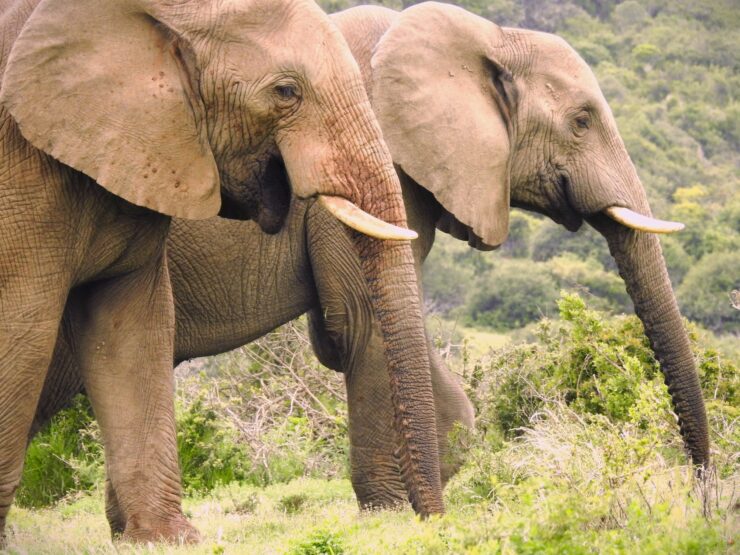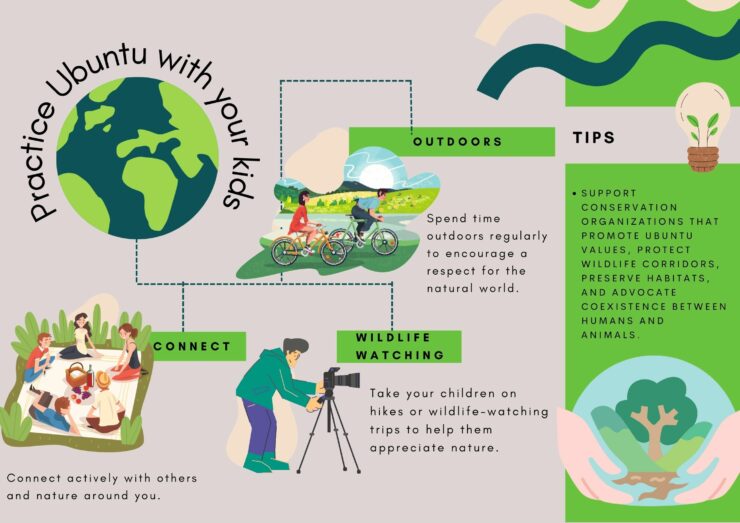Dangerously Endangered
From Fragmentation to Connection: The Promise of Wildlife Corridors
Written by Katherine Gamboa
The Netherlands has invested considerable resources in constructing animal passages, with approximately 600 ecoducts throughout the country. Additionally, they boast the world’s lengthiest wildlife corridor. But what exactly are wildlife corridors, and why are they becoming so vital to the preservation of endangered species?
On December 2022, in a groundbreaking discovery, scientists from Save the Elephants and the Biology Department of Oxford University successfully traced elephant tracks using an advanced Garmin GPS device that records location data every 3-5 seconds. The team then paired this information with satellite imagery to examine how small-scale variations in plant life influence elephant behavior. They found that elephants tend to select routes that take them directly to their favorite food.
The protection of wildlife has placed great emphasis on creating safe paths for elephants to travel through, known as elephant corridors. These pathways serve as indispensable connections between sanctuaries and grant safe passage for these magnificent creatures to traverse through. It must be noted that wildlife corridors play an integral role in safeguarding not just elephants but a vast array of other species too, because they combat habitat fragmentation, a critical threat to biodiversity.

Photography: African Elephants 2023 by Katherine Gamboa
Habitat fragmentation occurs when a once contiguous habitat becomes divided into smaller, isolated patches. This process poses a significant threat by fragmenting ecosystems and separating wildlife populations from food sources, breeding partners, and their habitats.
To combat this fragmentation, wildlife corridors serve as essential ecologically sustainable solutions.
South Africa, a country with one of the most diverse ecosystems in the world, has embraced a principle of connection called Ubuntu, which translates as “I am because we are.”
The Ubuntu Principle
This principle recognizes that all beings are interconnected, and the health of one affects the well-being of the entire community.
In order to protect and preserve wildlife, we must also protect and preserve their habitats as well as the livelihoods of the communities living alongside them. South Africa’s implementation of wildlife corridors through the Ubuntu principle is a prime example of how we can work towards a sustainable future for both wildlife and humans.
The Policy Position on Conservation and Sustainable Use of Elephants, Lions, Leopard, and Rhinoceros in South Africa (DFFE, 2021) is a thorough document that covers the ecological and socio-economic aspects of managing these species. It recognizes the coexistence between humans and wildlife with respect to Ubuntu values.
Before this policy was introduced, South Africa struggled with human-elephant conflict, where farmers viewed elephants as pests and would often resort to harming or killing them. Thanks to the Ubuntu principle and the implementation of wildlife corridors, this conflict has reduced significantly over the years.
The Great Limpopo Transfrontier Park is a great example of the success that can be achieved when Ubuntu values are applied to conservation efforts. This park spans across three countries, South Africa, Mozambique and Zimbabwe, and was created to protect important wildlife habitats in the region. This collaboration between different national policies and communities allowed for the creation of uninterrupted wildlife corridors, supporting populations of African elephants and other species.
However, these corridors are still scarce in South Africa because of the many fenced properties that create obstacles and barriers to wildlife movement.
Dr. Antoinette Van der Water is the founder of the “Bring the Elephant Home” organization and has worked closely with elephants in South Africa and Thailand since 2004. She said that the work they have been doing these years, trying to mitigate the human-elephant conflict, shows that conservation and human development can go hand in hand and is in fact essential for sustainable development.
“Wildlife corridors can also help to reduce human-wildlife conflicts by providing animals with alternative routes to move through human-dominated areas, reducing the likelihood of interactions with people or conflicts over resources.”
Van der Water said that through her work in South Africa, where local people have historically been excluded from conservation areas because of colonial policies such as apartheid, she experienced the importance of working together with all people to find sustainable solutions that support both conservation and human development, ensuring a healthy and prosperous future for all.
She added: ” In many African cultures, the concept of Ubuntu is closely tied to the idea of respect for the natural world and the belief that humans have a responsibility to care for and protect the environment. Wildlife corridors can be seen as a practical manifestation of this belief, as they promote the movement and survival of wild animals and help to maintain ecological balance.”
We asked Dr. Antoinette about how she thinks future teenagers/kids’ relationships will be with endangered species and foundations that work for conservation
She said: “Younger generations are growing up in a time when environmental issues are increasingly urgent. This increased awareness and concern may translate into a greater interest in supporting conservation efforts and taking action to make a difference.”
It is vital that we encourage this curiosity and equip youths with the ability to promote conservation efforts.
So here are a few tips from Dr. Antoinette Van der Water for practicing “Ubuntu” in daily life and with your kids:

Infographic: Katherine Gamboa
You must be logged in to post a comment.

